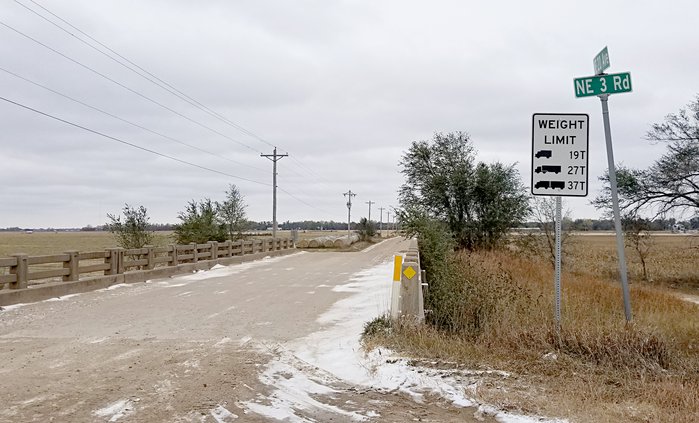There are 370 bridges in Barton County, some of which are a century old. A lot has changed in 100 years, and some of the older structures can’t handle today’s heavier vehicles.
As a result, County Engineer Barry McManaman told the County Commission Monday morning that traffic has to be restricted on an increasing number of them. So, commissioners approved establishing weight limits on a new batch of bridges maintained by the county, action that rescinded a resolution adopted in March 2019.
“Engineering load ratings have been performed on certain county-maintained bridges as required by federal regulations,” McManaman said. These regulations require that weight limit signs be installed at bridges that do not have enough capacity to safely support state legal loads.
This requires that the described bridges be posted with weight limits until such time that said bridge is replaced or conditions are corrected, McManaman said.
McManaman said the Kansas Department of Transportation is in year five of a 10-year program to rate weight limits on all bridges in the state. Barton County had the results on 44 of its bridges, and eight of those have required weight restrictions.
Now, results are known on 100 additional bridges, he said. And, another 21 need to be posted.
This involves the installation of signs leading up to the bridges in question, he said. These are placed at the bridges, but also far enough back to allow drivers time to find an alternative route if their vehicle is too heavy.
These bridges are scattered across the county, he said, adding the limits vary from structure to structure. These limits are based on a vehicles weight and the number of axles its has.
The signs are white with three black truck symbols demonstrating what is allowed. They have been ordered and should be up within the next couple of weeks.
There is another factor involved in addition to large trucks and farm implements – emergency vehicles. “This is a new part of the program,” McManaman said.
Of the 21 new listings, 17 have limits on the size of emergency traffic only.
He has contacted fire chiefs in the county and explained the situation. They are mapping routes in advance should they have to respond to an area served by one of these bridges.
There are still five years to go in this KDOT effort, and more bridges will likely be added. “That list is growing, unfortunately,” he said.





